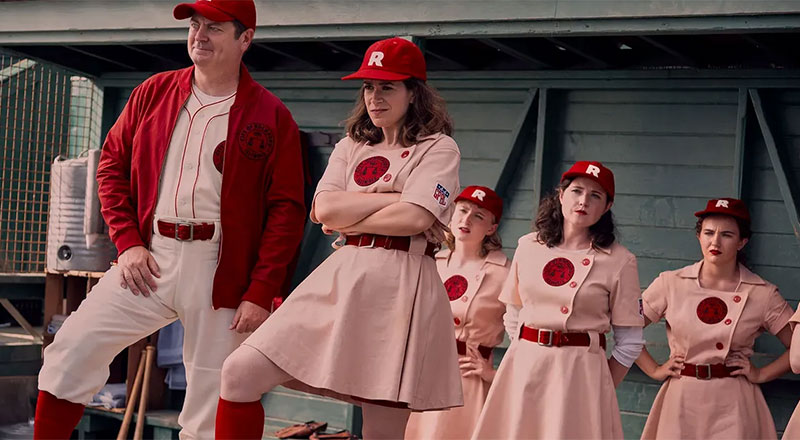The importance of queer representation
Libby Stevens, a BSc (Hons) Sociology student at Teesside University, reflects on her own coming out journey through a sociological lens. More specifically, the way that individuals may develop a notion of different sexuality identities, and how the representation of queer people can either enable or hinder the coming out process.

The importance of queer representation
While deciding on my dissertation topic for my sociology undergraduate, I began reflecting on my own coming out journey through a sociological lens. More specifically, the way that individuals may develop a notion of different sexuality identities, and how the representation of queer people can either enable or hinder the coming out process.
Throughout our learning experiences during primary socialisation, we begin to typify the world around us; this is what allows us to create a sense of structure and stability within the unpredictable postmodern world where a lot of our traditional social grand narratives have lost their relevance (Lyotard, 1999). Typifications allow us to begin constructing ideas about the people we interact with, form predictions for their social behaviours, and develop our own social script. We gather the social cues presented around us and use them as our basis for reality (Kim and Berard, 2009). Typified notions of social categories are often based on an oversimplified stereotype of the social category rather than being rooted in lived experience and personal knowledge; they are shallow and over-simplified, but we carry them as reality until they are proven false.
Through this early socialisation we may develop a typified notion of queer identities, which will often be based on negative or unrealistic, and limited exposure to queer people. The office for National Statistics (2023) found that only 3.2% of respondents of the 2021 census claimed to be non-heterosexual, this combined with GLAAD’s (2016;2022) findings that in 2015, just 4% of all regular characters on broadcast television fell into the LGB category (no transgender characters existed in this category at this time), and by 2021 this number had almost tripled to 11.9% identifying as LGBT, means that it is very possible for young queer and questioning people to not have any access to queer stories. The typifications that they would develop because of this would be mostly based on how the adults around them discuss queer people, which even in 2023 is not always positive, or even simply neutral.
Jenness (1992) describes the process of self-labelling as lesbian as one of typification, detypification, and finally retypification (Jenness specifically discusses the way in which lesbians may settle on the lesbian label for their own identity, but these ideas and processes can be easily applied to any queer label.) We develop typified notions of queer people when we are young, and as we come across positive queer representation, either through real people or in the media, there is a disruption to these typified ideas, and we come to realise that the stereotypes which we have been holding as social reality are not entirely accurate or representative of queer people. The queer people we meet, or see, do not fit within these small, and negative boxes we have formed for them. Breaking down our internalised bias is part of the detypification process, and what allows us to finally carry out retypification, in which we develop a new notion of queer identities that is more well-rounded, positive, and rooted in lived experiences. We are then able to reassess our personal life experiences, comparing them to our new typified notion, which opens the opportunity for self-categorisation.
Having to go through this process prolongs an individual’s coming out journey as their original typified notion does not match up with their sense of self which prevents them from being able to self-categorise within the queer community. Once retypification has occurred, the notion of queer people is much more likely to be compatible with the individual’s sense of self as it will be more positive and realistic. We need to see a variety of queer identities portrayed on screen to be able to make sense of our own experiences, and the feelings of difference we grow up with, but are not afforded the tools to understand. We need to see positive representation of people with similar characteristics and experiences to understand the meaning behind our own experiences and feelings. We are unable to understand and label our identity if we are unaware of the social category’s existence, true meaning, and its applicability to our individual experiences.
A League of Their Own (2022) demonstrates how far queer representation has come in recent years, and how easy it can be to center both queer characters and characters of colour. Set during the All-American Girls Professional Baseball League in 1940’s Rockford Illinois, it is a re-imagining of the 1992 film of the same name. The show expands upon the world that the film created by showing us the lives of the Black women who were not permitted to participate in the league, and the queer struggles associated with a period where being queer was not only dangerous but illegal. We are presented with a range of queer characters from trans-masc Bertie, to high-femme lesbians Greta and Gracie, as well as the newly questioning queer Carson. The show chooses to focus on the importance of found family, self-discovery, and queer joy, rather than the trauma that queer people both then and now know too well. The queer variety and positivity of this show sets it apart from most TV shows that have one or two background characters that are queer, with unfulfilling storylines. These characters are so much more than their queer identity, they are portrayed as real people; real queer people.
More representation like this would go a long way towards helping queer people of all ages and backgrounds come to terms with themselves. Stories that we can relate to, shown through a variety of people, and in a positive light is essential to the well-being and existence of queer people, it is what allows us to begin our journey of self-discovery and coming to terms with not aligning with the heteronormative expectations we grow up with.
References:
GLAAD (2016) Where We Are on TV 2015-2016. Available at: https://www.glaad.org/files/GLAAD-2015-WWAT.pdf (Accessed: 20th January 2023).
GLAAD (2022) Where We Are on TV 2021-2022. Available at: https://www.glaad.org/files/GLAAD-2015-WWAT.pdf (Accessed: 20th January 2023).
Kim, K. & Berard, T. 2009, "Typification in Society and Social Science: The Continuing Relevance of Schutz's Social Phenomenology", Human studies, vol. 32, no. 3, pp. 263-289.
Jeness, V. (1992), "COMING OUT: Lesbian identities and the categorization problem" in Modern Homosexualities, ed. K. Plummer, 1st edn, Routledge, London, UK, pp. 85-94.
Lyotard, J. 1999, The postmodern condition, Reprint. edn, Manchester Univ. Press, Manchester.
Office for National Statistics (2023) Sexual orientation, England and Wales: Census 2021. Available at: Sexual orientation, England and Wales - Office for National Statistics (ons.gov.uk) (Accessed: 19th January 2023).
Schutz, A. (1967) The Phenomenology of the social world. Benson, IL: Northwestern University Press.
 Ambulance service celebrates graduation of its first cohort
...
Ambulance service celebrates graduation of its first cohort
... Daniel’s inspiration towards games design career
Daniel’s inspiration towards games design career Vivian shared support while studying at Teesside
Vivian shared support while studying at Teesside